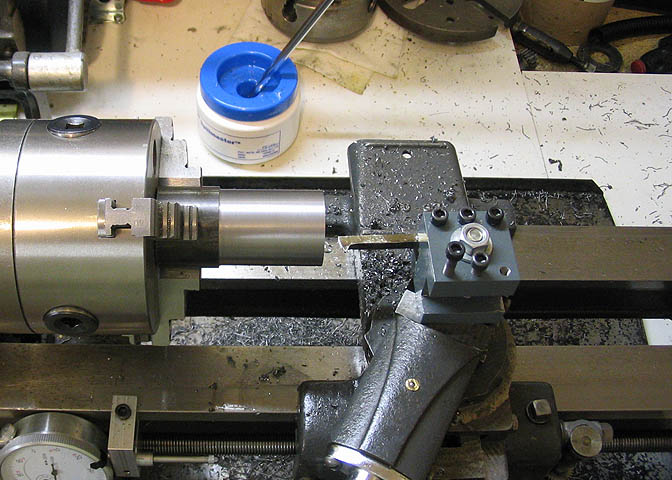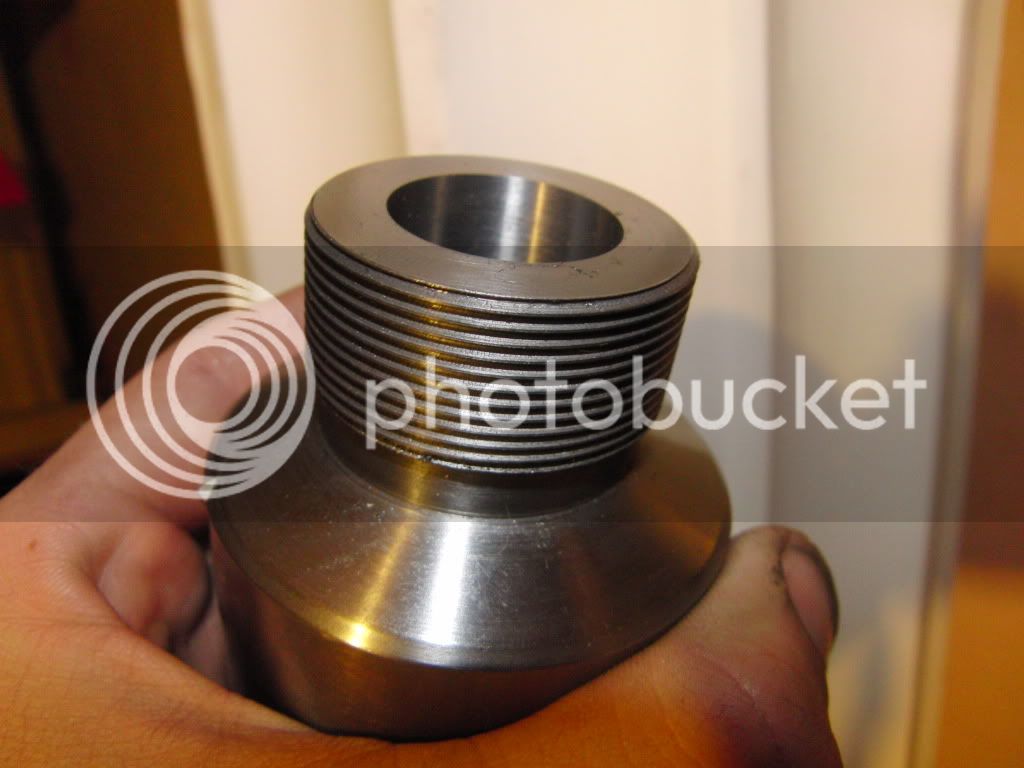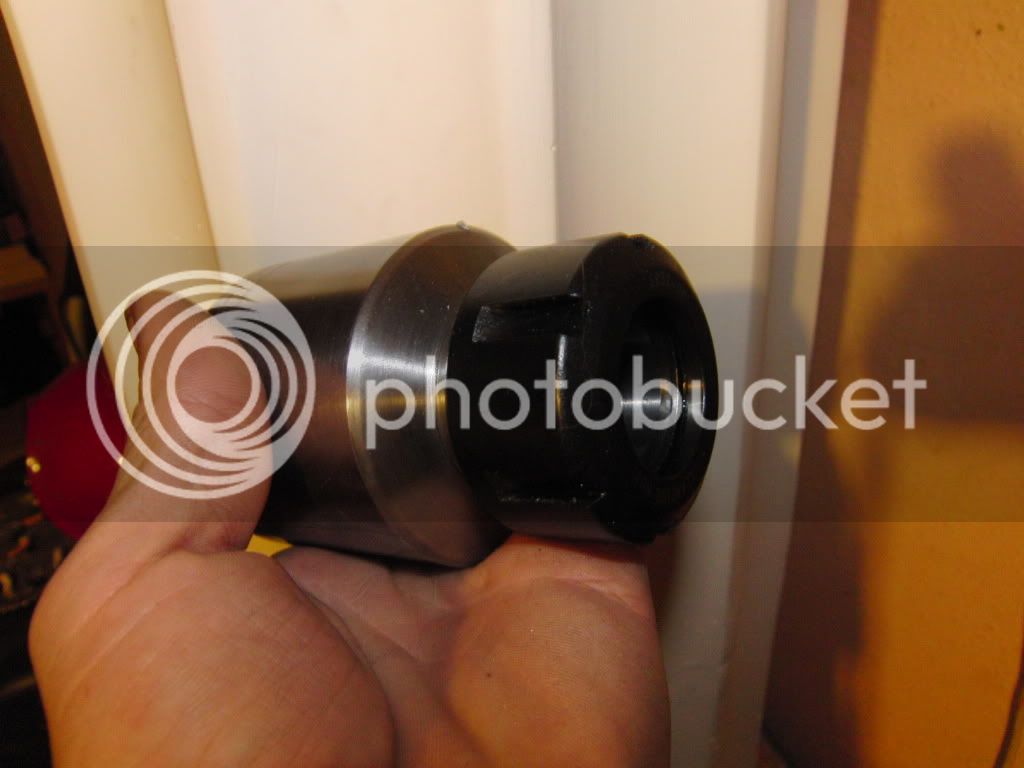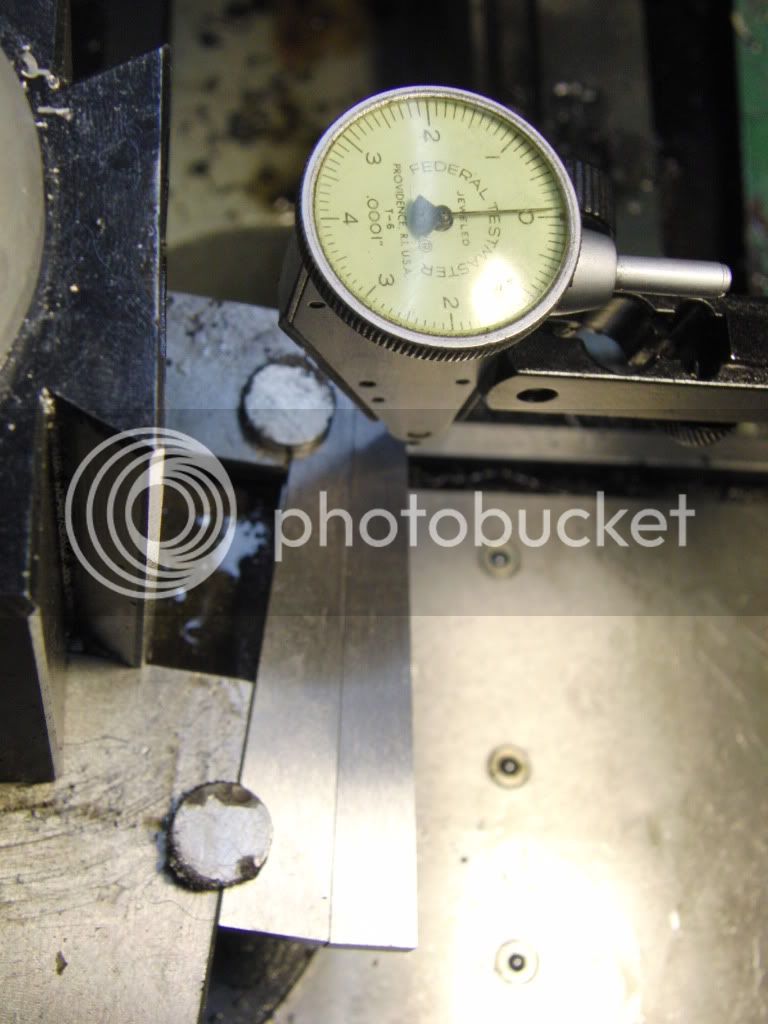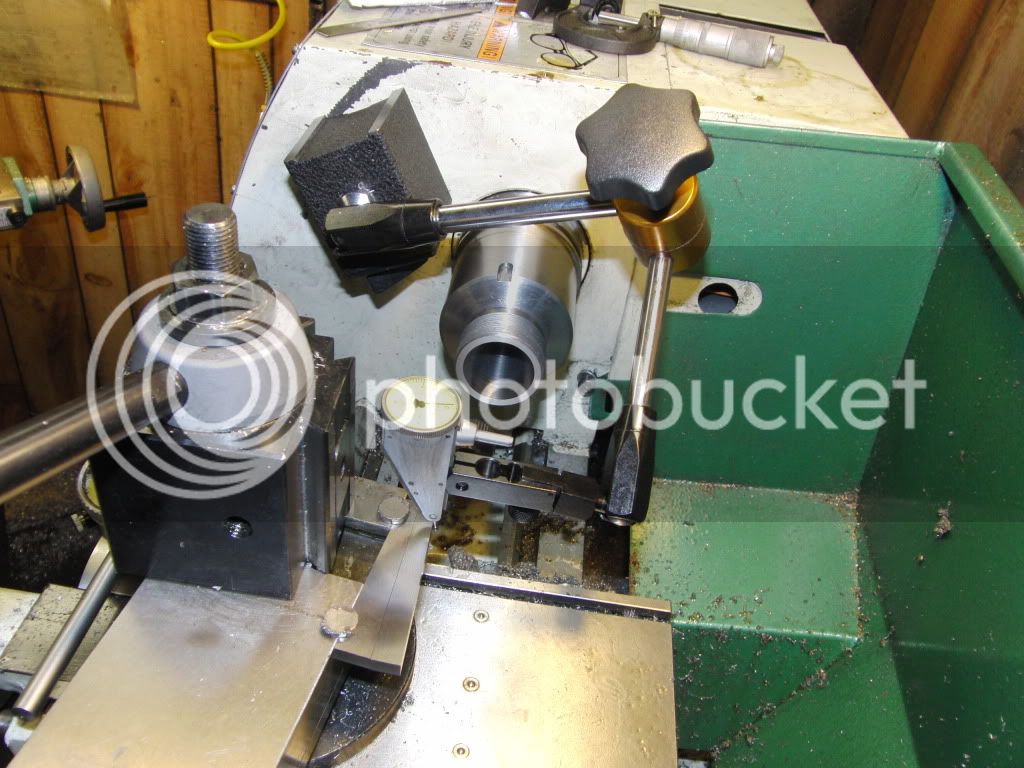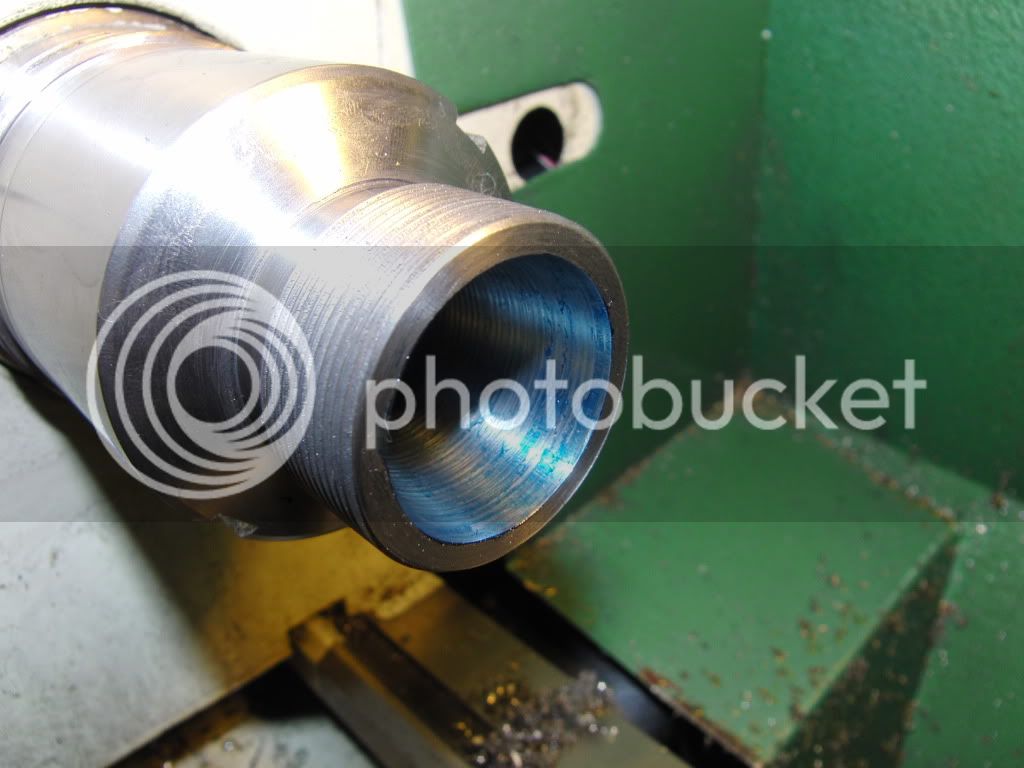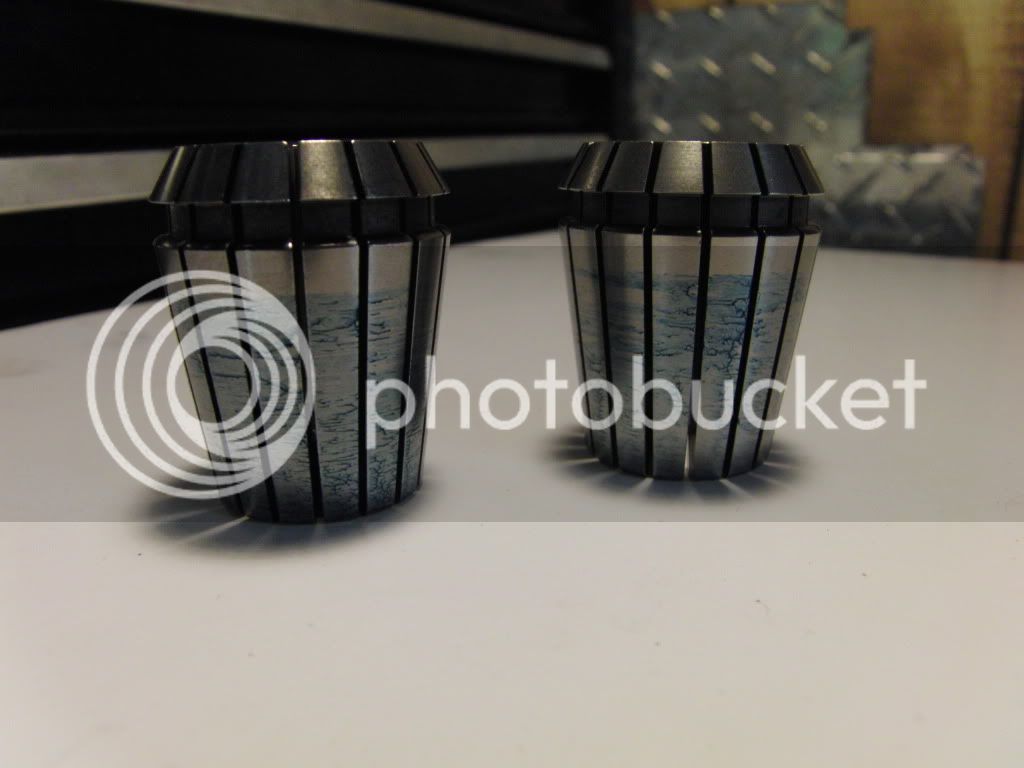Kel, well done Thm:; you'll find the collet chuck a valuable addition to your lathe; I know I did when I made mine.
Lets say I did not complete the threads and accidently disengaged the half nut. Is there anything I could have done to get the threads lined up with the spindle and leadscrew again?
In my limited experience, Yes, but it takes a bit of fiddling, and also depends on how you are set up for cutting the threads. The closer you are to final size, the harder it is as well, as there's less room for error.
The steps I follow to pick up are basically:
1. Crank out the cross slide so that the tool tip would clear the partly done threads.
2. Turn the carriage back past the start of the thread on the workpiece by quite a bit - 1/2" is good.
3. Engage the half nut again, and manually turn the chuck (or at slow speed start the lathe) until the tool position is part-way along the thread-in-making; As you started this beyond the start of the thread, it will remove backlash and set the gear train back to much the same conditions it encountered while cutting your thread thus far. From here on, the half nut must stay engaged.
4. If you can lock your carriage to the lathe bed, this is the time to do it, otherwise you have to be very careful not to disturb the carriage position in the next steps
5. Now the tricky bit... you have to get the toolbit back into the partially threaded groove - just lightly touching the workpiece. Depending on your way of working, this can be done in a couple of ways - by using the compound slide to adjust it, or by loosening the toolbit and just setting it in and tightening it again. The most important thing is to get the toolbit's tip back to full depth in the groove at the correct angle, and preferably to have some form of new reference on your cross and/or top slides for continuing. If you can't lock your lathes carriage for these steps, you have to be careful all the time not to disturb the carriage position!
6. With the toolbit set again, note your cross slide reading, back out the cross slide for the tool tip to clear the threads, and reverse the lathe so that the tooltip once again clears the workpiece . If you locked the carriage for the previous steps, remember to unlock it before reversing!
7. Start threading again, but for at least the first pass, dial in the cross slide to a thou less than the noted reading from step 6 - and do a couple of very fine infeed passes to judge how accurately you managed to pick up the thread. Seems a silly thing to do, but if there was something out of kilter while you were re-setting things, it should become obvious without ruining your work, and you can try and rectify it.
There are most definitely other methods of picking up a part-turned thread as well, so this was just my 2 cents on what works for me

Kind regards, Arnold
